- Bookshelf 1
- Bookshelf 2
- Bookshelf 3
- Bookshelf 4
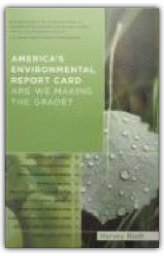 Americans today are increasingly concerned about the state of the environment. Polls show that a remarkable 63 percent would roll back recent tax cuts to finance environmental protection and that fully 95 percent want environmental education included in the public school curriculum. America's Environmental Report Card offers answers to some of our most pressing environmental questions, providing a timely reminder of what we need to accomplish to achieve a sustainable environment. It lays out the scientific facts about water and air pollution, energy, global warming, and the ozone layer in a lively, conversational style, enhanced by illustrations, and charts a course of action for protecting the environment.  The Long-Awaited Revision of the Bestselling Family Health Guide  From the trusted authors of the "People's Pharmacy" syndicated newspaper column comes an essential reference that empowers readers to make intelligent, informed choices from among the array of treatment options—home remedies, herbal and nutritional supplements, and prescription and over-the-counter drugs—available today 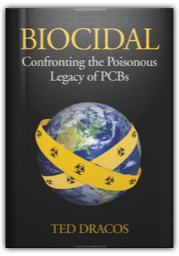 In 1962, Rachel Carson stunned the world with the publication of Silent Spring, exposing the lethal character of the pesticide DDT. Her work launched a global campaign against synthetic chemical toxins and veritably created a world environmental movement. But unbeknownst to Carson, an even more insidious chemical cousin to DDT had been silently poisoning the biosphere. 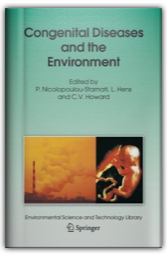 In recent years, increasing attention and resources have been brought to bear on the relationship between the environment and congenital diseases. These diseases were previously thought to be mostly due to genetic causes. Even though the importance of genes as factors in causation is accepted, environmental factors seem to be implicated just as strongly. This book explores some further concepts that have arisen from more recent perceptions of environmental effects and their possible interactions with living systems. Amongst the topics discussed are: 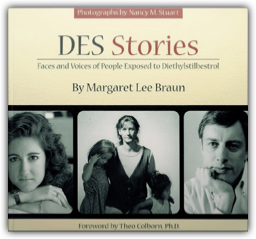 DES Stories is a tribute to the millions of lives upended by exposure to DES, diethylstilbestrol, synthetic estrogen, toxic chemical, and carcinogenic prescription drug. In photographic portraits and interviews, DES daughters, mothers, and sons tell, in their own voice, what it's like to be DES-exposed. Today the DES story continues to unfold as research brings new findings to light. DES Stories rings with daring honestyand points to broader concerns about the effects of endocrine-disrupting chemicals.  The definitive book about early puberty in girls—what it is, how it happens, when to be concerned, and how it should be treated. |
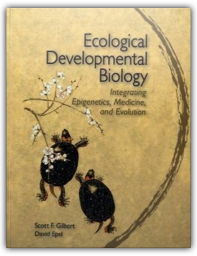 When the molecular processes of epigenetics meet the ecological processes of phenotypic plasticity, the result is a revolutionary new field: ecological developmental biology, or eco-devo. This new science studies development in the real world of predators, pathogens, competitors, symbionts, toxic compounds, temperature changes, and nutritional differences. These environmental agents can result in changes to an individual s phenotype, often implemented when signals from the environment elicit epigenetic changes in gene expression. Ecological developmental biology is a truly integrative biology, detailing the interactions between developing organisms and their environmental contexts. Ecological developmental biology also provides a systems approach to the study of pathology, integrating the studies of diabetes, cancers, obesity, and the aging syndrome into the framework of an ecologically sensitive developmental biology. It looks at examples where the environment provides expected cues for normal development and where the organism develops improperly without such cues. Data from research on teratology, endocrine disruptors, and microbial symbioses, when integrated into a developmental context, may have enormous implications for human health as well as the overall health of Earth s ecosystems. The study of epigenetics changes in gene expression that are not the result of changes in a gene s DNA sequence has recently provided startling insights not only into mechanisms of development, but also into the mechanisms and processes of evolution. The notion that epialleles (changes in chromosome structure that alter gene expression) can be induced by environmental agents and transmitted across generations has altered our notions of evolution, as have new experiments documenting the genetic fixation of environmentally induced changes in development. The widespread use of symbiosis in development provides new targets for natural selection. Ecological developmental biology integrates these new ideas into an extended evolutionary synthesis that retains and enriches the notion of evolution by natural selection. 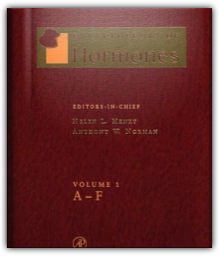 The Encyclopedia of Hormones is a comprehensive reference work on hormones in vertebrate, invertebrate, and plant systems. It covers all aspects of hormones: their chemical structure and biological synthesis; the major physiological systems in which they operate; the cellular and subcellular site of their action; the nature of the signal transduction mechanisms used in the hormone's action; and the biological consequences of an excess or deficiency of the hormone. 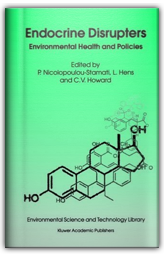 During recent decades, millions of tonnes of man-made chemicals have been produced and released into the environment, with very little safety testing. Many of these chemical substances have been found to interfere with the endocrine system and modulate its function. This book not only overviews the effects of endocrine/disrupting substances on human health, but also addresses the regulatory problems from the point of view of international organisations, including the WHO, the EU, and the European Chlorine Industry.  The rise in the incidence of health problems, such as reproductive disorders and testicular and breast cancer, has been linked by some to endocrine-disrupting chemicals in the environment. The role of food in transmitting these chemicals is uncertain and a topic of considerable research. This important book addresses key topics in this area. Opening chapters review the effects of endocrine-disrupting chemicals on health and behavior. The second part of the book covers the origins, analysis, and risk assessment of endocrine disruptors in food products. Concluding chapters concentrate on particular endocrine-disrupting chemicals. 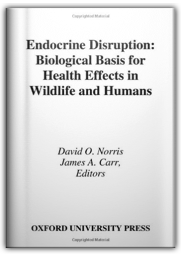 This book addresses the biological effects of the reasonably large number of classes of compounds that have been recognized as endocrine disrupters. These compounds have been found to persist as pollutants in the environment, and have been blamed for causing developmental disorders and/or fertility problems in fish, amphibians, reptiles, birds, and possibly humans. This book presents the relevant fundamentals of the endocrine systems of animals and humans, the toxicology, developmental toxicology, ecology, and risk assessment methods, and lays out the current state of understanding for the whole field, organized by the classes of compounds that have been identified as endocrine disrupters. 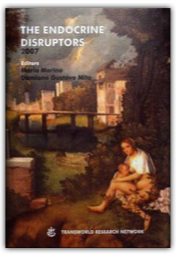 In recent years, it has become evident that many chemicals present in the environment can mimic, antagonize or alter the physiological actions of endogenous hormones. These compounds have been termed endocrine disrupters (EDs) and defined as exogenous substances that cause adverse health effects in an intact organism or in its progeny, consequent to changes in endocrine function . EDs, even when present in minute amounts (part per trillion), could interfere with the synthesis, secretion, transport, metabolism, binding, action, or elimination of natural hormones responsible for homeostasis maintenance, reproduction, and developmental processes. 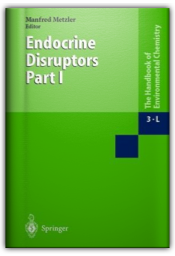 The field of endocrine disruption or endocrine active compounds (EACs), which is just emerging and still controversial, is comprehensively covered by leading experts in Volume 3, Subvolumes L (the present volume, Part I) and M (Part II). The major classes of endocrine active chemicals are discussed, as well as methods for their detection and their association with health disturbances in humans and wildlife. The etiology of several of the human diseases associated with endocrine disruptors, e.g. breast and prostate cancer, decreased fertility and malformations, is still poorly understood, and the current state of knowledge is presented. Since hormonally active agents appear to have the potential of both adverse and beneficial effects, the evidence of health benefits associated with endocrine active compounds in humans is also presented. Basic chapters on the mode of action of EACs and on the etiology of the associated diseases facilitate the understanding of this complex subject for non-medical readers. |
 There is great concern regarding the reproductive and health hazards of endocrine disruptors. Research indicates that men are experiencing declining fertility and an increased incidence of prostate cancer, while women are dealing with increased infertility, early menopause, and breast cancer. As new research reveals the previously unknown risks of these endocrine disruptors, it is imperative to update our knowledge of these controversial chemicals. 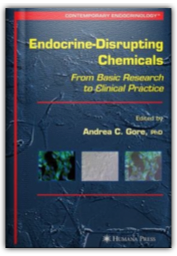 Endocrine Disrupting Chemicals: From Basic Research to Clinical Practice is the first book that provides comprehensive coverage of the three most important themes in the field of EDC research: the basic biology of EDCs, particularly their effects on reproductive systems; EDC effects on humans and wildlife, including biomedical considerations; and potential interventions and practical advice for dealing with the problem of EDCs. This book presents a translational approach to EDC research, spanning both basic biology and clinical applications, and provides a critical link between the laboratory and the physicians' office. Scientists and physicians engaged in EDC studies or practice will find that this volume offers insight across all areas of EDC research, including clarifying the mechanisms for EDC effects, understanding the adverse affects of EDCs on humans and wildlife, and offering solutions to the problems created by exposures to EDCs. 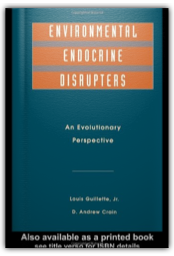 Univ. of Florida-Gainesville. Presents the latest research in reproductive toxicology, focusing on endocrine disruption by contaminants in humans, other mammals, and other vertebrates. It addresses specifically the problem of endocrine disrupting contaminants from an evolutionary comparative perspective. For researchers. 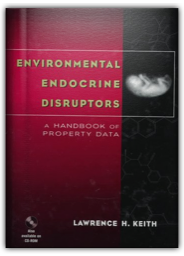 This database, available in print and electronic form, provides information on chemical, physical, and toxicological properties of known and suspected environmental endocrine disruptors in a convenient easy-to-use format. Much of the research on EEDs has focused on the effects of these chemicals on wildlife, linking certain compounds to birth defects and abnormal development of immune and reproductive systems. 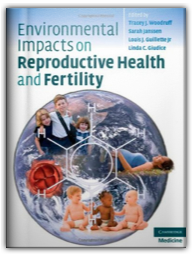 Many reproductive and developmental health problems are caused by exposure to chemicals that are widely dispersed in our environment. These problems include infertility, miscarriage, poor pregnancy outcomes, abnormal fetal development, early puberty, endometriosis, and diseases and cancers of reproductive organs. The compelling nature of the collective science has resulted in recognition of a new field of environmental reproductive health. Focusing on exposures to environmental contaminants, particularly during critical periods in development and their potential effects on all aspects of future reproductive life-course, this book provides the first comprehensive source of information bringing together the arguments that are spread out among various scientific disciplines in environmental health, clinical and public health fields. It provides a review of the science in key areas of the relationship between environmental contaminants and reproductive health outcomes, and recommendations on efforts toward prevention in clinical care and public policy. 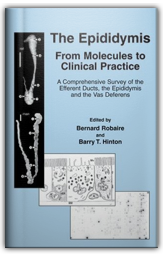 The epididymus has become increasingly important to researchers engaged in fertility and its regulation. Until now, no single volume review of the field has been available. The Epididymis: From Molecules to Clinical Practice A Comprehensive Survey of Efferent Ducts, The Epididymis and the Vas Deferens will provide a complete, up-to-date, in-depth review of the research on the male reproductive tract. Structure, function, and molecular mechanisms underlying the control of the efferent ducts, epididymus, and vas deferens will be reviewed. 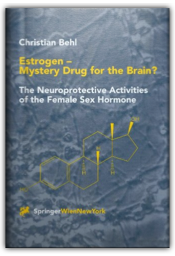 (Spring Wien New York) Max Planck Institut fur Psychiatrie, Munich, Germany. Traces six years of work devoted to gaining an understanding of the manifold neuronal activities of estrogen. The biochemical, molecular, and cellular factors underlying estrogen's protective capacity are described. |
 Winner of the 2008 NAUTILUS SILVER AWARD in the category of Ecology/Environment/Sustainability and Conscious Media/Journalism 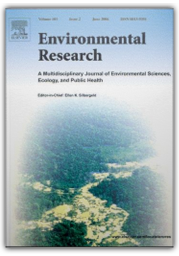 This digital document is a journal article from Environmental Research, published by Elsevier in 2007. The article is delivered in HTML format and is available in your Amazon.com Media Library immediately after purchase. You can view it with any web browser. 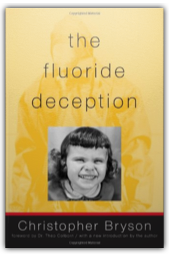 "It is my sincere hope that Christopher Bryson's apparently thorough and comprehensive perusal of the scientific literature on the biological actions of fluoride and the ensuing debates through the years will receive the attention it deserves and that its implications will be seriously considered."-Arvid Carlsson, winner of the 2000 Nobel Prize in Medicine 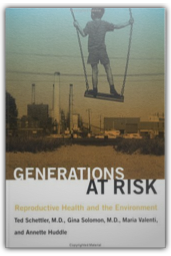 Generations at Risk presents compelling evidence that human exposure to some toxic chemicals can have lifelong and even intergenerational effects on human reproduction and development. The result of a collaboration involving public health professionals, physicians, environmental educators, and policy advocates, this book examines how scientific, social, economic, and political systems may fail to protect us from environmental and occupational toxicants. It is an important sourcebook for those concerned about their own health and that of their loved ones, as well as for medical and public health workers, community activists, policymakers, and industrial decision makers. 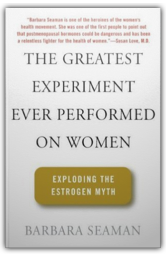 Now in paperback, Barbara Seaman's groundbreaking book that blows the lid off the wholesale use of estrogen to treat menopause.  A brilliant writer, first-time mother, and respected biologist, Sandra Steingraber tells the month-by-month story of her own pregnancy, weaving in the new knowledge of embryology, the intricate development of organs, the emerging architecture of the brain, and the transformation of the mother's body to nourish and protect the new life. At the same time, she shows all the hazards that we are now allowing to threaten each precious stage of development, including the breast-feeding relationship between mothers and their newborns. In the eyes of an ecologist, the mother's body is the first environment, the mediator between the toxins in our food, water, and air and her unborn child.Never before has the metamorphosis of a few cells into a baby seemed so astonishingly vivid, and never before has the threat of environmental pollution to conception, pregnancy, and even to the safety of breast milk been revealed with such clarity and urgency. In Having Faith, poetry and science combine in a passionate call to action.A Merloyd Lawrence Book  The first prescriptive book on the subject, Hormone Deception reveals where hormone disruptors come from and how they affect adults, children, and the unborn child. It also gives you easy, practical tips for protecting your home and your family, such as vacuuming frequently and using water filters. Includes a foreword by John R. Lee, M.D., and a preface by John A. McLachlan, Ph.D. |
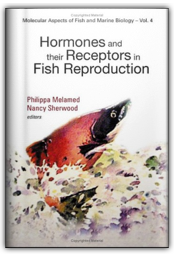 Research on the molecular aspects of fish reproduction has progressed swiftly over the past few years. With the availability of wide-ranging molecular tools, fish researchers have elucidated many of the molecular mechanisms regulating reproduction which operate in the brain, pituitary and gonad. This research has revealed novel variants of reproductive hormones and their receptors, and has shed new light on the mechanisms through which many of these genes can be activated. Several of the findings, which are reported in this book, have formed the basis for subsequent mammalian research and will also constitute the platform on which new approaches to reproductive management in aquaculture can be developed.  Hormones and Pharmaceuticals Generated by Concentrated Animal Feeding Operations: Transport in Water and Soil examines how hormones, antibiotics and pharmaceuticals generated from concentrated animal feeding operations (CAFOs) of cattle, poultry, swine and aquaculture are transported in water and soil. Little is known of the environmental fate of the tons of physiologically active steroid hormones released each year. In their own regard, in the last 20 years considerable attention has been given to a wide variety of natural and anthropomorphic agents known as endocrine disrupting compounds (EDCs). Until the contribution of steroid hormones to the environment are better defined, it will be difficult to quantify the exact impact of EDCs. While some advances in the understanding of the fate of these compounds in water has been made, little is known about the processes that govern their transport in soil or how they eventually reach groundwater. As this book discusses extensively, it is somewhat of a mystery how steroids, with their lipophilic nature, strong binding to humic acids and extensive metabolism by soil bacteria, can be transported through even a few centimeters of soil, let alone 20 to 40 meters to the groundwater. With respect to antibiotics, the emphasis is on their fate and transport in the environment and on the emergence of antibiotic resistant bacteria. Impacts on soil ecology, including the impact of antibiotics on the metabolism of other active agents, is also discussed. Similarly, the acaricides and insecticides used in animal husbandry are widely used and their environmental pathways have been studied and have significant impacts on soil and dung ecology. Active compounds with potential environmental impacts, such as growth promoters generated from CAFOs, are described. However, because little is known of their environmental fate, emphasis is placed on defining the gaps in our knowledge and defining their possible effects. 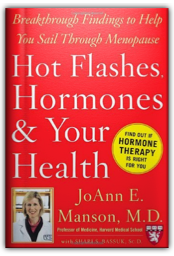 What you should know about menopausal hormone therapy—from the renowned Harvard doctor who is one of the pioneers conducting the latest research in the field 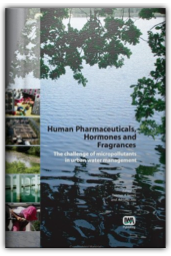 The observed concentrations of pharmaceuticals and personal care products (PPCPs) in raw wastewater confirm that municipal wastewater represents the main disposal pathway for the PPCPs consumed in households, hospitals and industry. In sewage treatment plant effluents most PPCPs are still present, since many of these polar and persistent compounds are being removed only partially or, in some cases, not at all. Treated wastewater therefore represents an important point source for PPCPs into the environment. After passing a sewage treatment plant the treated wastewater is mostly discharged into rivers and streams or sometimes used to irrigate fields. If drinking water is produced using resources containing a substantial proportion of treated wastewater (e.g. from river water downstream of communities) the water cycle is closed and indirect potable reuse occurs. Human Pharmaceuticals, Hormones and Fragrances provides an overview of the occurrence, analytics, removal and environmental risk of pharmaceuticals and personal care products in wastewater, surface water and drinking water.The book covers all aspects of the fate and removal of PPCPs in the whole water cycle: consumption and occurrence, analytical methods, the legal background, environmental risk assessment, human and animal toxicology, source control options, wastewater and drinking water treatment as well as indirect reuse. The book presents a summary of the results obtained during the EU project "Poseidon", combined with further expert knowledge on the field, and is written at a level appropriate for professionals involved in management of water resource quality. Professionals in the field including decision makers, engineers and scientists, as well as students entering the field, will find this an invaluable source of information. *First comprehensive study on the assessment, fate and removal of pharmaceuticals and personal care products in wastewater and drinking water treatment. *Emphasises the importance of micropollutants in the water cycle, provides methods for quantifying their fate and technologies for their removal. 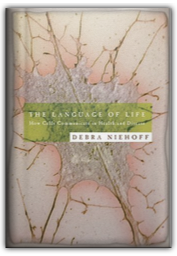 Cells talkand scientists are listening. One of the most intriguing topics in molecular biology, biochemical communication is the cornerstone of modern medicine and the mainstay of cutting-edge pharmaceutical research. For nearly a century, researchers have been straining to hear the whispered conversations among cells, hoping to master the basics of their language. They know that if we can decipher and translate this cellular chatter, we have the potential for sending signals of our own that could repair wounds, reduce cholesterol, control insulin levels, or even block the reproduction of cancer cells. The possibilities are extraordinary. 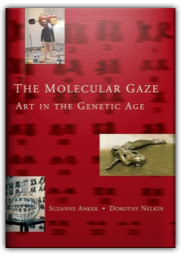 The gene has become a cultural icon and an increasingly rich source of imagery and ideas for visual artists. Drawing on a wide range of contemporary painting and sculpture, The Molecular Gaze: Art in the Genetic Age explores the moral and bioethical questions these works address. What does it mean to be human? What is "identity" in a society of genetically manipulated individuals? Questions like these are growing louder as genetic technology advances and the public examines the ethical consequences more widely. Suzanne Anker and Dorothy Nelkin, an artist and a social scientist, have written a thought-provoking and visually fascinating book for scientists, artists, students, and general readers intrigued by the anxiety and exhilaration of the genetic age.  Molecular Toxicology is the first volume of a three-volume set Molecular, Clinical and Environmental Toxicology that offers a comprehensive and in-depth response to the increasing importance and abundance of chemicals in daily life. By providing intriguing insights far down to the molecular level, this work covers the entire range of modern toxicology with special emphasis on recent developments and achievements. It is written for students and professionals in medicine, science, public health and engineering who are demanding reliable information on toxic or potentially harmful agents and their adverse effects on the human body. |
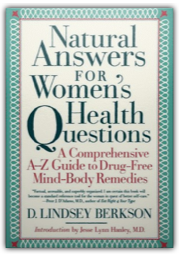 One-Stop Problem Solving...Naturally 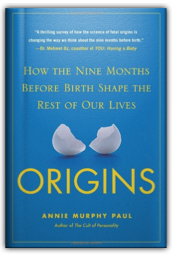 What makes us the way we are? Some say it's the genes we inherit at conception. Others are sure it's the environment we experience in childhood. But could it be that many of our individual characteristics—our health, our intelligence, our temperaments—are influenced by the conditions we encountered before birth?That's the claim of an exciting and provocative field known as fetal origins. Over the past twenty years, scientists have been developing a radically new understanding of our very earliest experiences and how they exert lasting effects on us from infancy well into adulthood. Their research offers a bold new view of pregnancy as a crucial staging ground for our health, ability, and well-being throughout life.Author and journalist Annie Murphy Paul ventures into the laboratories of fetal researchers, interviews experts from around the world, and delves into the rich history of ideas about how we're shaped before birth. She discovers dramatic stories: how individuals gestated during the Nazi siege of Holland in World War II are still feeling its consequences decades later; how pregnant women who experienced the 9/11 attacks passed their trauma on to their offspring in the womb; how a lab accident led to the discovery of a common household chemical that can harm the developing fetus; how the study of a century-old flu pandemic reveals the high personal and societal costs of poor prenatal experience. Origins also brings to light astonishing scientific findings: how a single exposure to an environmental toxin may produce damage that is passed on to multiple generations; how conditions as varied as diabetes, heart disease, and mental illness may get their start in utero; why the womb is medicine's latest target for the promotion of lifelong health, from preventing cancer to reducing obesity. The fetus is not an inert being, but an active and dynamic creature, responding and adapting as it readies itself for life in the particular world it will enter. The pregnant woman is not merely a source of potential harm to her fetus, as she is so often reminded, but a source of influence on her future child that is far more powerful and positive than we ever knew. And pregnancy is not a nine-month wait for the big event of birth, but a momentous period unto itself, a cradle of individual strength and wellness and a crucible of public health and social equality. 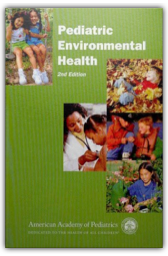 Handbook reflects continued advances in the understanding of the etiology, identification and management of diseases in children linked to the environment. Discusses environmental hazards to children and provides guidance regarding how to diagnose, treat, and prevent childhood diseases linked to environmental exposures. For practicing clinicians. Previous edition: c1999. Softcover. 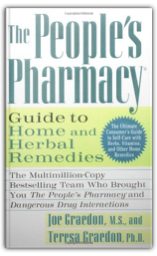 *44% of adults take prescription medication. 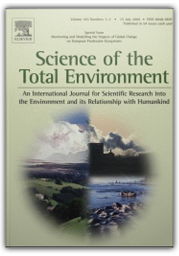 This digital document is a journal article from Science of the Total Environment, The, published by Elsevier in 2004. The article is delivered in HTML format and is available in your Amazon.com Media Library immediately after purchase. You can view it with any web browser. 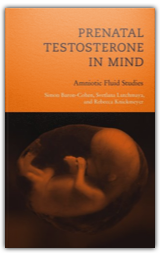 This pioneering study looks at the effects of prenatal testosterone on postnatal development and behavior. Hormonal effects on behavior have long been studied in animals; the unique contribution of this book is to suggest a connection between human fetal hormones and later behavior. It details for the first time testosterone's effect on social and language development, opening a new avenue of research for cognitive neuroscience. 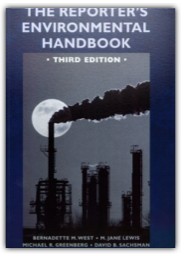 When an environmental news story breaks, the first place to turn for background on the issue is The Reporter's Environmental Handbook, now available in an updated and expanded third edition. Here, journalists can find the fast facts they need to accurately cover complex and controversial environmental stories ranging from indoor and outdoor air quality to sprawl and bioterrorism. |
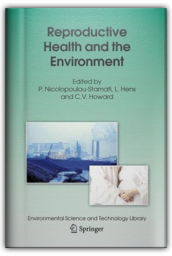 The link between reproductive health and the environment has been strengthened by the findings of recent studies. It is becoming increasingly important to link results and data from such studies into a model that aids in the explanation of phenomena observed in the field and facilitates predictability. ;To this end, the aim of this book is to review recent trends and developments in the study of the impact that the environment has on human reproduction. These issues are thoroughly examined, using the most modern techniques and methods available, to analyze the manner in which both male and female fertility can be affected and assessed. Such diverse factors as toxic environmental contaminants, air pollution, and exposure to medical drugs are examined. The book includes both a historical overview and a look towards the future, aiming to integrate health concerns into policy-making and legislation. 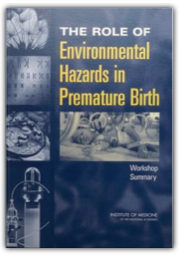 Presents material from the third of a series of workshops sponsored by the Roundtable on Environmental Health Sciences, Research, and Medicine. Examines the problem of preterm birth as an environmental health problem. Softcover. DNLM: Labor, Premature—etiology—Congresses. 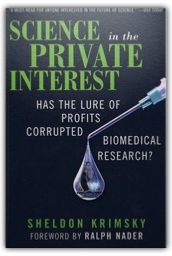 University science is now entangled with entrepreneurship, and researchers with a commercial interest are caught in an ethical quandary. Science in the Private Interest investigates the trends and effects of modern, commercialized academic science. Visit our website for sample chapters!  Did you know that human sperm is ejaculated at a speed of 17 km/h.? Or that ejaculate is pushed out in 0,8 second intervals? Or that the male orgasm, which usually lasts between 3 and 10 seconds, only in exceptional cases lasts longer than 15 seconds? Or that it is accompanied by an increase in heart frequency to 180 beats per minute, and that breathing can accelerate to 40 breaths per minute? Just about any question about semen, fertility, male sexual potency, and sexual physiology, is answered by Vivien Marx in this lively, informed and entertainingly written book. It is a book for men. It is a book for women. It is a reference book, a textbook, and a good read. If you ever wondered what the purpose of orgasm is, what determines the smell and colour of semen, wondered about delayed ejaculations - retrograde ejaculations, how best to look after testicles, how smoking, alcohol, drugs, stress and lifestyle affect potency and fertility, how environmental influences fertility, (are British men an endangered species?), about semen and disease - the unloved companions of the sperm cells, semen and criminology, the history of semen science, how semen is tested - you will find the answers to these and hundreds of other questions here. Of potential interest to everyone who walks into a bookshop. Meticulously researched and written in an entertaining and informative style. Sure to attract media attention. Timely book for the sexual health market . 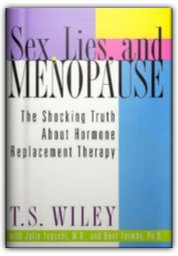 In this revolutionary work — a landmark that signals the true beginning of feminist medicine — a doctor, a philosopher, and a scientist prove that by postponing marriage and motherhood, women have accelerated the aging process, resulting in earlier menopause and, ultimately for thousands, earlier death. In Sex, Lies, and Menopause, T.S. Wiley, Julie Taguchi, M.D., and Bent Formby, Ph.D., turn thirty years of medical and cultural wisdom on its head, challenging both 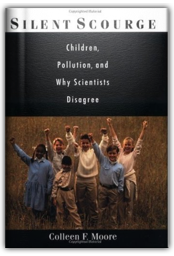 How does pollution impact our daily quality of life? What are the effects of pollution on children's development? Why do industry and environmental experts disagree about what levels of pollutants are safe? In this clearly written book, Moore traces the debates around five key pollutants—-lead, mercury, noise, pesticides, and dioxins and PCBs—-and provides an overview of the history of each pollutant, basic research findings, and the scientific and regulatory controversies surrounding it. Moore focuses, in particular, on the impact of these pollutants on children's psychological development—- their intellectual functioning, behavior, and emotional states. Only by understanding the impact of pollution can we prevent future negative effects on quality of life and even pollution disasters from occurring. This volume will be of great interest to parents, child health care experts, public health officials, regulators, and health and environmental advocates. 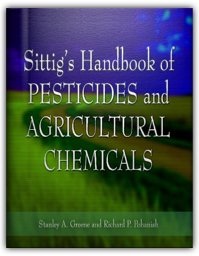 Sittig's Handbook of Pesticides and Agricultural Chemicals is specifically designed for use by those engaged in the agricultural and food processing industries, both vital to our nation's health and economy. People in every phase of food production, from the farm to the fork, will find a wealth of material here. It will also be of interest to professionals in the pharmaceutical, cosmetics, and personal care industries who use agricultural products as ingredients. It provides crop, chemical, regulatory, health and safety information on nearly 800 pesticides, fertilizers, and other agricultural chemicals. These chemicals are organized withg unique identifiers so that all who may have contact with or interest in them can find critical information quickly. |
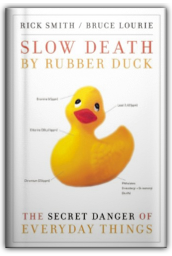 Pollution is no longer just about belching smokestacks and ugly sewer pipes—now, it's personal. The most dangerous pollution, it turns out, comes from commonplace items in our homes and workplaces. To prove this point, for one week authors Rick Smith and Bruce Lourie ingested and inhaled a host of things that surround all of us. Using their own bodies as the reference point to tell the story of pollution in our modern world, they expose the miscreant corporate giants who manufacture the toxins, the weak-kneed government officials who let it happen, and the effects on people and families across the globe. This book—the testimony of their experience—exposes the extent to which we are poisoned every day of our lives, from the simple household dust that is polluting our blood to the toxins in our urine that are created by run-of-the-mill shampoos and toothpaste. Ultimately hopeful, the book empowers readers with some simple ideas for protecting themselves and their families, and changing things for the better. 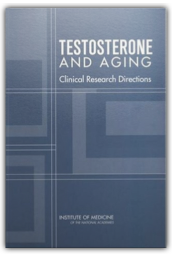 Text features a report from the National Institute of Medicine, as requested by the National Institute of Aging and the National Cancer Institute, on the potential beneficial and adverse effects of testosterone therapy in older men. Features conclusions and recommendations derived from a twelve-month study and clinical trials. Softcover. 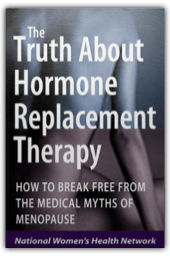 Just Say No to America's Number-One Drug  When Puberity is Precocious: Scientific and Clinical Aspects provides a unique continuum of expertise, looking at puberty from anthropologic, epidemiologic, clinical, and molecular perspectives. The volume addresses broad pubertal changes in the general population while at the same time providing in depth information about specific disorders of puberty and the latest management changes. The text is divided into seven parts. The first is an in-depth investigation into neuroendocrine control of puberty, the second looks at secular trends and the onset of puberty, and the third provides an examination into isolated breast development. The fourth section covers adrenal abnormalities and puberty, the next two sections include chapters on gonadotropin's effects, and the final section is a looks at environmental effects on puberty. Comprehensive and timely, When Puberity is Precocious: Scientific and Clinical Aspects will become an essential reference for endocrinologists and internists with an interest in precocious puberty. 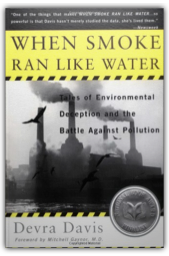 The National Book Award Finalist from a leading public-health expert, this is the unknown story of how environmental pollution has affected our health-past, present, and future. |


